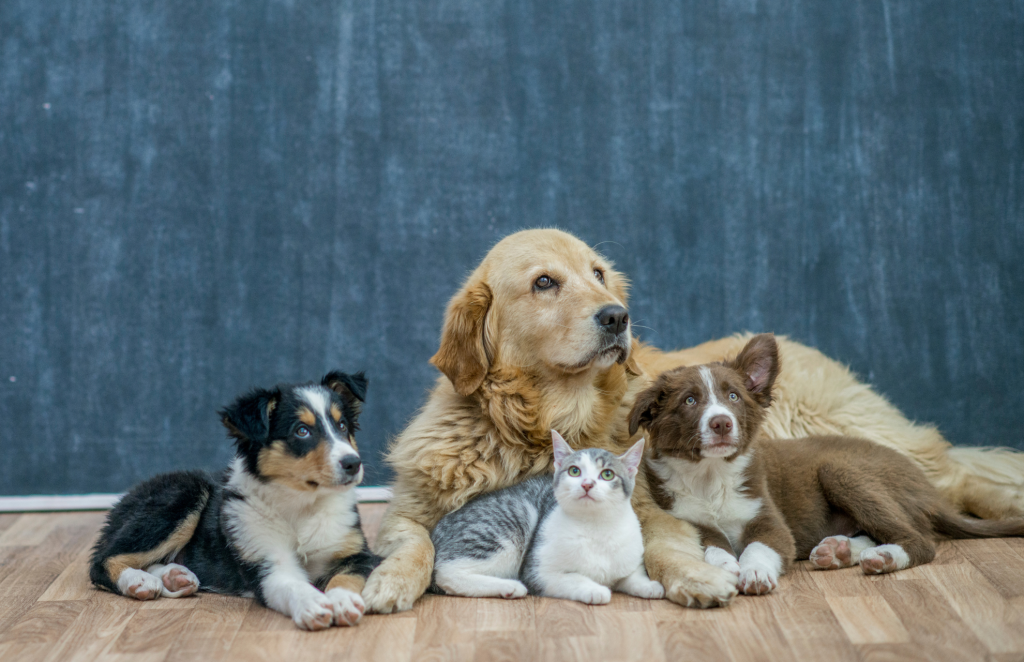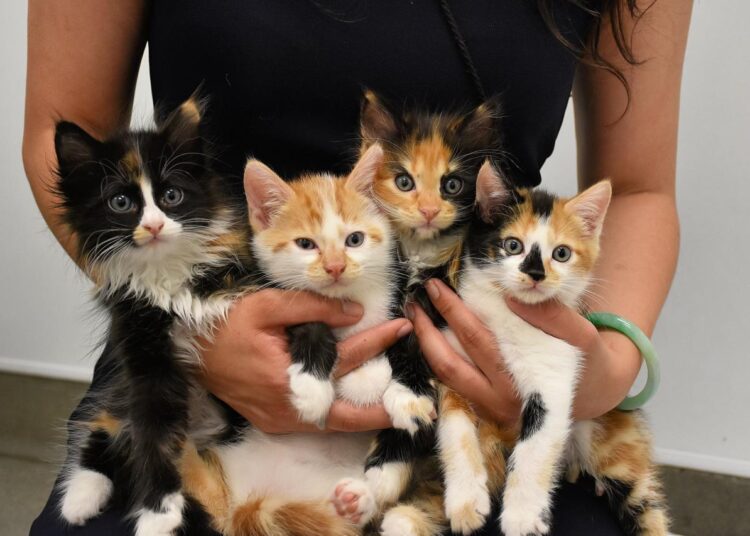The landscape of pet adoption has transformed dramatically over recent decades, evolving from simple transactions to a multifaceted process driven by welfare, responsible ownership, and a deeper understanding of animal behavior. What was once primarily a way to acquire a pet has become a powerful social movement focused on rescuing animals in need, reducing shelter populations, and ensuring every companion animal finds a suitable, loving, and permanent home. This shift reflects a profound change in societal attitudes towards pets, recognizing them as sentient beings deserving of protection and compassionate care.Today’s pet adoption process is more rigorous, thoughtful, and digitally integrated than ever before, establishing new norms that benefit animals, adopters, and communities alike. This comprehensive article delves into the contemporary trends shaping pet adoption, explores the innovative approaches shelters and rescues are employing, highlights the evolving responsibilities of adopters, and provides essential guidance for navigating this rewarding yet complex journey towards welcoming a new furry, feathered, or scaled family member.
The Evolution of Pet Adoption

Historically, acquiring a pet was often a simple exchange, with less emphasis on the animal’s background or the adopter’s suitability. Pet shops and backyard breeders were common sources, and animal shelters primarily served as impoundment facilities. However, several critical developments have reshaped this narrative:
A. Increased Awareness of Animal Welfare: Growing public consciousness about animal cruelty, overpopulation, and the plight of homeless animals.
B. Rise of Rescue Organizations: A proliferation of non-profit groups dedicated to saving specific breeds, types of animals, or those from high-kill shelters.
C. “Adopt, Don’t Shop” Movement: A powerful advocacy campaign encouraging adoption from shelters and rescues as the primary choice for acquiring a pet.
D. Digital Transformation: The internet and social media have revolutionized how animals are showcased, connected with potential adopters, and how applications are processed.
E. Emphasis on Behavior and Compatibility: A greater understanding of the importance of matching a pet’s temperament and needs with an adopter’s lifestyle.
F. Legislative Changes: Stricter animal welfare laws and puppy mill regulations in many regions.
These factors have converged to create a modern adoption ecosystem focused on finding the right home for each animal, rather than just any home.
New Norms in the Adoption Process
The contemporary pet adoption journey is often more structured and thorough, reflecting a commitment to successful, lifelong placements.
A. Comprehensive Application Processes
Adoption applications are now detailed, probing into various aspects of a prospective adopter’s life.
- Lifestyle Questions: Queries about work schedules, time spent at home, travel frequency, and plans for the pet during absences.
- Living Situation: Details about housing type (apartment, house), yard access, rental agreements (and landlord pet policies), and local pet regulations.
- Household Composition: Information on the number of adults, children (ages), and existing pets (species, temperament, vaccination status).
- Previous Pet Ownership History: Experience with animals, veterinary history of past pets, and reasons for previous relinquishments.
- Financial Preparedness: Understanding the costs associated with pet care (food, vet bills, grooming) and the adopter’s ability to meet these.Purpose: These questions help adoption counselors assess suitability, identify potential red flags, and ensure the adopter can provide a safe and stable environment.
B. In-Depth Screening and Verification
Beyond the initial application, modern adoption processes often involve several layers of vetting.
- Reference Checks: Contacting personal references to verify responsibility and character.
- Veterinary Reference Checks: If the adopter has had pets before, shelters often contact their previous veterinarian to verify a history of responsible medical care.
- Home Visits (Virtual or In-Person): Increasingly common, especially for certain rescues or specific animals. These visits assess the living environment for safety (e.g., secure fencing, potential hazards), cleanliness, and suitability for the chosen pet. Virtual tours via video call have become more common post-pandemic.
- Landlord Verification: Contacting landlords to confirm pet policies and avoid future relinquishments due to housing issues.
C. Behavior Assessments for Pets
Shelters and rescues now put significant effort into understanding each animal’s unique personality and needs.
- Temperament Testing: Standardized (or customized) tests to evaluate a pet’s reaction to various stimuli (strangers, other animals, loud noises, handling), assessing their sociability, fear levels, and potential for aggression.
- Behavioral Observations: Staff and volunteers observe pets daily in various settings (kennel, play yard) to gather insights into their true personalities, play styles, and habits.
- Play Groups: Observing how dogs interact in supervised play groups helps assess their social skills with other canines.
- Medical Evaluations: Thorough veterinary exams, vaccinations, spaying/neutering, microchipping, and often addressing any immediate health concerns before adoption.Purpose: These assessments allow adoption counselors to make informed recommendations, match pets with suitable homes, and provide adopters with realistic expectations.
D. Counseling and Matchmaking
The process has shifted from “first come, first served” to a more thoughtful matchmaking approach.
- Adoption Counselors: Trained staff work closely with potential adopters to understand their lifestyle, experience, and what they’re looking for in a pet.
- Needs-Based Matching: Rather than just a cute face, the focus is on matching a pet’s specific needs (e.g., high energy, need for quiet home, specific training requirements) with an adopter’s ability to meet them.
- Realistic Expectations: Counselors educate adopters on the realities of pet ownership, including common behavioral issues, training needs, and financial commitments.
- Post-Adoption Support: Many organizations now offer follow-up calls, behavioral advice lines, training resources, or even temporary foster care if a placement isn’t immediately successful.
E. Digital Platforms and Online Presence
The internet has revolutionized reach and efficiency in adoption.
- Online Pet Portals: Websites like Petfinder and Adopt-a-Pet allow shelters to list available animals with photos, bios, and behavioral notes, reaching a vast audience.
- Social Media Marketing: Shelters heavily utilize platforms like Facebook, Instagram, and TikTok to showcase adoptable pets, share success stories, and appeal for fosters or donations.
- Virtual Meet-and-Greets: Video calls to introduce pets to potential out-of-area adopters.
- Online Applications: Streamlining the initial application process.Benefits: Increased visibility for adoptable pets, wider geographic reach for potential adopters, and more efficient processing of applications.
F. Foster-to-Adopt Programs
A growing trend, allowing potential adopters to take a pet into their home for a trial period.
- Trial Period: Offers an opportunity for the pet to decompress in a home environment and for the family to experience living with the pet before full commitment.
- Better Assessment: Provides more accurate insights into the pet’s behavior in a home setting.
- Reduced Returns: Often leads to more successful, permanent placements by identifying potential mismatches early.
G. Breed-Specific and Specialized Rescues
Beyond general shelters, many dedicated rescues focus on specific breeds (e.g., Golden Retriever Rescue) or types of animals (e.g., rabbit rescues, senior pet rescues, special needs rescues). These often have deep expertise in the needs of their specific animals.
Why These New Norms Matter

The stricter, more comprehensive adoption process serves multiple crucial purposes, ultimately leading to better outcomes.
A. Improved Animal Welfare
- Higher Success Rates: More thoughtful matching means fewer returns to shelters, reducing stress and instability for the animals.
- Reduced Overpopulation: Promoting adoption helps decrease the demand for animals from irresponsible breeding operations.
- Better Health Outcomes: Animals are often spayed/neutered, vaccinated, and medically assessed before adoption.
- Safe Environments: Screening processes ensure pets go to homes free of hazards or neglect.
B. Empowered and Responsible Adopters
- Educated Decisions: Adopters receive comprehensive information, preparing them for the realities and responsibilities of pet ownership.
- Reduced Surrender Rates: Better matches and support systems lead to fewer pets being returned due to unforeseen challenges.
- Access to Resources: Many adoption agencies provide post-adoption support, training advice, and community resources.
C. More Efficient Shelter Operations
- Streamlined Processes: Digital tools and comprehensive applications make the adoption process more efficient.
- Reduced Strain on Resources: Fewer returns mean fewer animals needing re-sheltering and fewer resources spent on re-processing.
- Focused Efforts: Staff can dedicate more time to rehabilitating animals and finding truly suitable matches.
D. Community Well-being
- Reduced Stray Population: Fewer abandoned animals roaming streets.
- Public Safety: Proper screening and behavioral assessments can help ensure pets are not a danger to the community.
- Promoting Responsible Pet Ownership: The process educates the public on ethical pet care.
A Guide for Adopters
While the process is more rigorous, it’s also more rewarding. Here’s how to successfully navigate the new norms of pet adoption.
A. Self-Reflection
Before even looking at pets, honestly assess your home, finances, and time commitment.
- Time: How much time can you realistically dedicate daily to exercise, training, and interaction?
- Finances: Can you afford routine vet care, food, supplies, and unexpected emergencies? Pet insurance can help.
- Living Space: Do you have appropriate space? Is your landlord pet-friendly?
- Experience: Are you a first-time owner or experienced? What kind of challenges are you prepared for?
B. Research Reputable Shelters and Rescues
- Check Reviews: Look for organizations with positive reviews and transparent processes.
- Verify Non-Profit Status: Ensure they are legitimate non-profit organizations focused on welfare.
- Ask About Policies: Inquire about their adoption process, veterinary care provided, and return policy.
- Avoid Red Flags: Be wary of organizations with no application process, no screening, or an unwillingness to provide veterinary records.
C. Be Patient and Prepared for Scrutiny
- Don’t Get Discouraged: The application process can feel intrusive, but remember it’s for the animal’s best interest.
- Be Transparent: Answer all questions truthfully and openly.
- Understand Waiting Periods: It’s rare to walk in and adopt a pet on the same day. The process can take days or weeks.
D. Open Mind, But Clear Needs
- Be Flexible: While you might have a dream breed or look in mind, be open to different types of pets that match your lifestyle.
- Focus on Temperament: Prioritize personality and energy level over appearance.
- Listen to Counselors: Trust the expertise of adoption counselors; they know the animals best.
E. Prepare Your Home
- Pet-Proofing: Before bringing a pet home, ensure your living space is safe (see our “Home Pet Safety” article!). Remove hazards, secure cabinets, and put away toxic plants.
- Essential Supplies: Have food, water bowls, a comfortable bed, toys, collar/leash, and initial training supplies ready.
- Designate a Safe Space: A quiet area where your new pet can decompress and feel secure during the initial adjustment period.
F. Plan for the Adjustment Period
- “Two-Week Shutdown” (for Dogs): Many trainers recommend a period of low-stimulation and clear routine to help a new dog adjust.
- Gradual Introductions: If you have existing pets, introduce them slowly and carefully.
- Training and Socialization: Be prepared to invest time in positive reinforcement training and appropriate socialization.
- Patience is Key: It can take weeks or even months for a pet to fully settle into a new home and show their true personality.
G. Utilize Post-Adoption Support
If the shelter or rescue offers follow-up support, take advantage of it. Don’t hesitate to reach out if you encounter challenges or have questions.
The Future of Pet Adoption
The new norms in pet adoption are just the beginning. The future holds even more innovative and data-driven approaches.
A. AI-Powered Matchmaking
Sophisticated algorithms could analyze vast amounts of data (pet behavior, adopter lifestyle, home characteristics) to suggest highly compatible matches, potentially reducing human bias and increasing success rates.
B. Virtual Reality Tours
Potential adopters might be able to “virtually” visit shelter environments and interact with animals, giving them a better sense of the pet’s personality before an in-person meeting.
C. Wearable Tech Integration
Data from smart collars (activity levels, sleep patterns, stress indicators) could be shared with shelters to provide even richer behavioral insights for matchmaking.
D. Expanded Tele-Behavioral Support
Increased availability of virtual consultations with veterinary behaviorists post-adoption, providing accessible expert help for integration challenges.
E. Community Adoption Hubs
More decentralized adoption models, where animals might be fostered in homes or temporary pop-up locations within communities, making them more visible and accessible.
F. Focus on “Difficult-to-Place” Animals
More specialized programs and resources dedicated to finding homes for senior pets, special needs animals, or those with significant behavioral challenges, through tailored support systems for adopters.
G. Universal Pet ID Systems
Globally standardized, interoperable microchip and registration systems to facilitate easier identification and return of lost pets, reducing shelter intake.
Conclusion
The new norms in pet adoption reflect a profound societal commitment to animal welfare. While the process may seem more demanding than in the past, its rigor is a testament to the dedication of shelters and rescues to ensure every animal finds its perfect, permanent match. This thoughtful evolution benefits not only the pets themselves, who gain secure and loving homes, but also the adopters, who embark on their journey with greater knowledge and support, and the communities, which thrive with fewer homeless animals.
Embracing these new standards means embracing responsible pet ownership at its highest level. For those ready to open their hearts and homes, the modern pet adoption journey is a deeply fulfilling path, leading to the incomparable joy of welcoming a deserving companion into your family and becoming a vital part of their success story.








